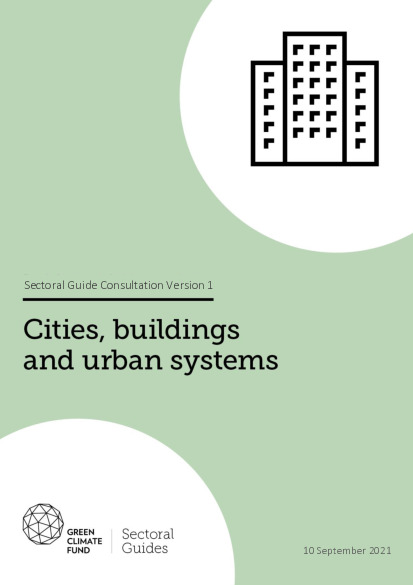Sectoral guide: Cities, buildings and urban systems
With more than two thirds of the global population expected to reside in cities by the 2050, as explained by the United Nations, urbanization offers both unprecedented risks and opportunities with respect to the global response to climate change. The IPCC has concluded that cities and urban infrastructure are one of four critical global systems that are key to reducing global greenhouse gas emissions (GHG) and limiting long-term global warming levels to less than 1.5°C above pre-industrial levels. Moreover, researchers showed that cities represent at least 58% of direct global emissions and constitute at least 21% of the potential for direct global emissions reduction, hence climate action in mega-cities and in large and rapidly growing secondary cities has the potential to meaningfully reduce carbon emissions. While mega and large cities constitute an immediate potential for reduction in emissions, secondary cities are vital to breaking dependency on high-carbon development as they grow to large cities. However, governments are unable to access the finance needed to invest in low-emission, climate resilient urbanization.
The urgent challenge is thus to avoid path dependencies that will firmly embed highly GHG emission reliant and fragile urban development – especially across the construction, infrastructure, household and enterprise sectors. The barriers confirmed by Accredited Entities and National Designated Authorities that responded to a survey to assess the market for urban climate finance were mainly in urban climate finance such as limited access to international finance and low capacity of urban public actors to develop projects ready for investment.
Comparative research has yielded a set of four paradigm-shifting pathways in both mega/large and secondary cities, which have strong potential to deliver high-impact, cost-effective climate benefits at scale, with local benefits. These are (1) decarbonization of urban energy systems, (2) energy efficiency in building stock, (3) compact and resilient urban development, and (4) circular urban economy. The GCF is well placed to support developing countries raise and realize their climate ambition in the urban sector through country-driven approach.
The sectoral guide draft was released for consultation between November 2020 and January 2021. The Secretariat received more than 570 suggestions and recommendations which are addressed in the current version of the guide. The sectoral guide will be submitted to the GCF Board for its consideration in 2022. In the meantime, GCF remains open to further feedback on this draft. For further inquiries please contact us via: [email protected].
